AU
AU, which stands for "astronomical unit", is a unit for measuring distance. One AU is the average distance from the Sun's center to the Earth's center. It is equal to 149,597,871 km (92,955,807 miles).
AUs are often more convenient to use than kilometers when measuring large distances such as those in space. In this case kilometers are just too small - it would be like measuring the distance from Boston to San Francisco in inches. AUs simply make a measurement easier to understand and give you something to compare it to.
For example, Saturn's orbit around the Sun has an average radius of 9.5 AU, which means that Saturn is about ten times farther from the Sun than Earth is. The average distance from the Sun to distant Pluto is about 40 AU. Mercury, the planet closest to the Sun, orbits at an average distance of 0.39 AU.
AUs are generally used for measurements of distances within our Solar System. Distances to stars are much larger, and are expressed in terms of light years. One light year is equal to more than 63,000 AUs. The nearest star, Proxima Centauri, is just over 4 light years away.
You might also be interested in:
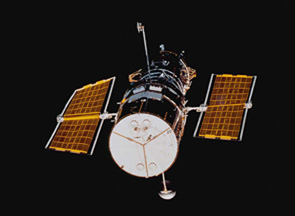
The Hubble Space Telescope (HST) is really neat! It was first launched in 1990, but scientists started building it in the 1970's! We have found all kinds of objects like stars, nebulae and galaxies. The
...more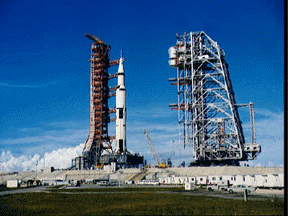
Apollo 11 was the first mission that landed a person on the moon. On July 16, 1969, the U. S. rocket Saturn 5 was launched carrying the lunar landing module Eagle. The Eagle was released and it reached
...more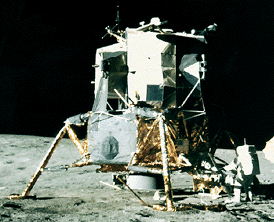
Apollo 12 was launched on Nov. 14, 1969 and arrived at the Moon three days later. Astronauts Charles Conrad and Alan Bean descended to its surface, while Richard Gordon remained in lunar orbit aboard the
...more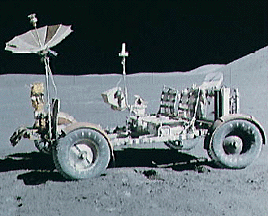
Apollo 15 marked the start of a new series of missions from the Apollo space program, each capable of exploring more lunar terrain than ever before. Launched on July 26, 1971, Apollo 15 reached the Moon
...more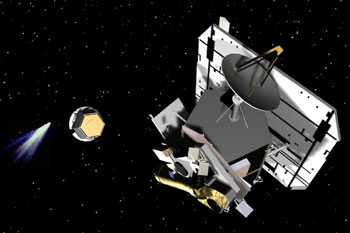
NASA chose Deep Impact to be part of a special series called the Discovery Program. This program is for cheap, scientific projects. In May 2001, NASA said it was ok to start with mission development for
...more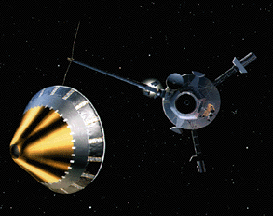
Galileo was a spacecraft that orbited Jupiter for eight years. It made many discoveries about Jupiter and its moons. Galileo was launched in 1989, and reached Jupiter in 1995. The spacecraft had two parts.
...more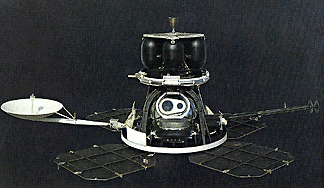
During 1966 through 1967, five Lunar Orbiter spacecrafts were launched, with the purpose of mapping the Moon's surface in preparation for the Apollo and Surveyor landings. All five missions were successful,
...more














